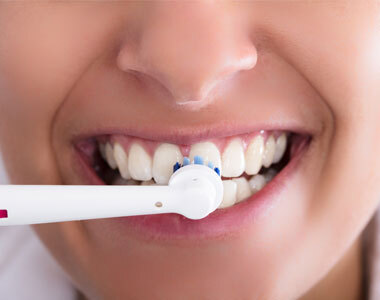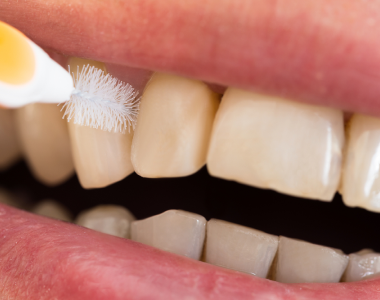
Beyond Brushing – Taking care of your oral health
Category : Gentalcare
Brushing your teeth every morning and night doesn’t guarantee you’re giving your mouth all the attention it needs.
Having a thorough dental care routine that goes beyond just brushing your teeth, and ensuring you have the right tools in your bathroom cupboard, can take your oral health to another level and give you a good clean.
Here are our top tips for ensuring a healthy mouth and enamel.
Why is enamel so important?
The enamel on your teeth is a protective outer layer on each tooth. It is the hardest and most highly mineralized substance in your body. Every time you eat and drink, you expose your teeth to acids and bacteria that are in your food. This would seriously harm teeth if it weren’t for tooth enamel. It’s the most visible part of the tooth, and it’s what people see when you smile or open your mouth.
When enamel is damaged or starts to decay, you cannot restore it: enamel simply doesn’t grow back. Sensitivity to hot and cold foods will occur. Here are a few oral hygiene steps to follow to ensure the maximum upkeep of tooth enamel.
Brush regularly (but not too hard)
Many people brush regularly, but simply don’t brush enough for their teeth to stay clean.
It is recommended to brush just before bed and at one other time during the day with fluoride toothpaste. Using an electric toothbrush is better for you and your enamel than manual toothbrushes for several reasons. They are constantly rotating and cleaning as you move over your teeth and they rotate at a far higher speed than you could achieve with your hand, providing a deeper clean.
Thus they can help to get rid of surface stains without applying too much pressure on the tooth’s surface.
Use a mouthwash
Drinks high in sugar, like fizzy drinks, are the number one culprits as they are tremendously high in sugar and very acidic. This combination accelerates the loss of your tooth enamel.
A good mouthwash can go where toothbrushes and floss can’t to rid your mouth of the same debris that irritates the gum line and causes gingivitis. Add a quality alcohol-free mouthwash to your oral care regime to get the most thorough clean you can, even when you’re on the go.
Pick the correct toothpaste
One common misconception when it comes to oral hygiene and tooth enamel is that teeth whitening formulas are healthy. However, whitening toothpaste that contains peroxide can be too harsh on your enamel due to the peroxide content which can damage your enamel and can cause increased and unwanted sensitivity.
Instead, choose a toothpaste that gently removes stains without the use of peroxide. The vital ingredient to protecting your enamel is fluoride, which helps to remineralize your enamel and protects your teeth’s sensitivity.
Floss properly
Like brushing, flossing must be done properly so that, when you reach between teeth, you get to the plaque not reached by your toothbrush.
Brushing only gets around 50% of the plaque buildup, so spending a few minutes each day flossing helps to get to those hard-to-reach areas.
Ideally, use a floss tape that can be more gentle on gums, and make sure to floss morning and evening.
https://www.dentalhealth.org/blog/brushing-and-beyond-taking-care-of-your-oral-health

 Review Us
Review Us  Review Us
Review Us 